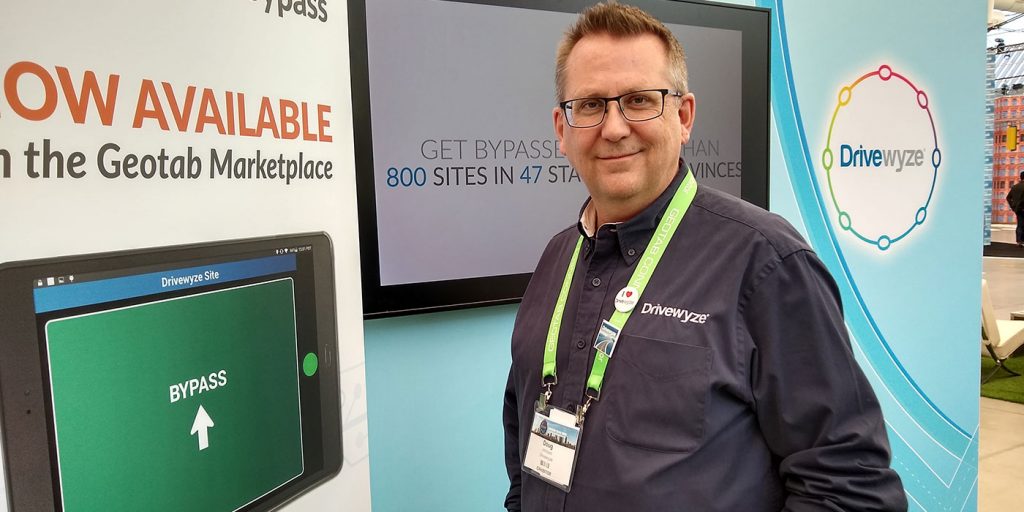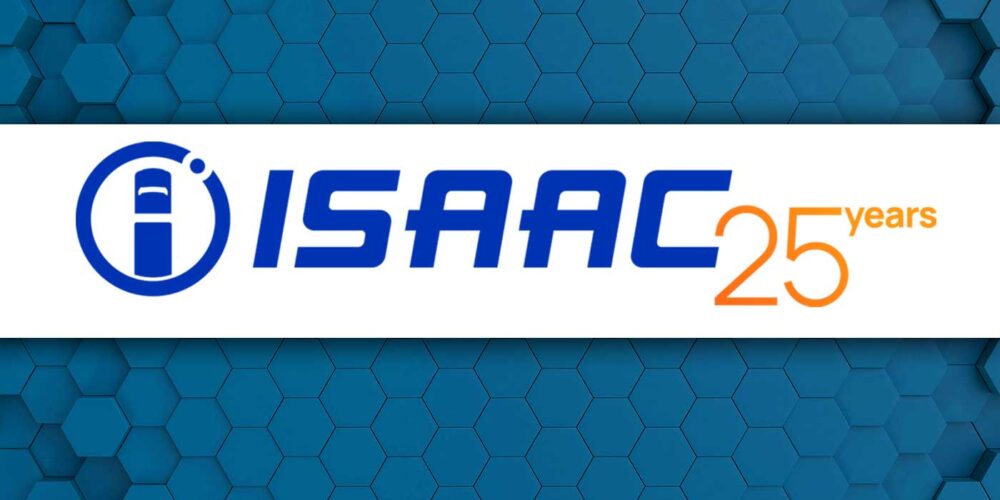Open APIs were a big talking point at Geotab Connect. What that means to fleets is the ability to integrate technologies. Within the market as a whole, it means more companies collaborating on solutions to bring more value to the market. Drivewyze is a great example of this in action. The weigh station bypass provider offers a 100% software solution that integrates with many existing hardware providers, like Geotab’s Go device, Omnitracs, PeopleNet and Rand McNally hardware. That means you can talk with your reseller, have Drivewyze added to your telematics platform and start putting bypass to work.
“The great thing about being integrated with the ELD manufacturers is that we can pull the information we need from the ELD,” explained Doug Johnson, Drivewyze vice president of marketing, as he stood in the Drivewyze booth at Geotab Connect just hours before the announcement that Drivewyze was available on the Geotab Marketplace. “The ELD knows what its DOT number is, what the VIN is, what the license plate number is. If a fleet manager decides he wants to try us out, in Geotab’s case, he can go to the MyGeotab portal and automate their levels of service.”
And those levels are growing rapidly. Fleet Equipment (FE) sat down with Johnson to learn more about Drivewyze’s technology and his view of the ever-changing trucking data industry.
FE: So how are you using and pulling in additional information like weight?
Johnson: It’s interesting–weigh stations aren’t really just about weight anymore. They used to be. Today, however, there are more points of inspection triage.
What Drivewyze does is take the fleet and truck information—the identification information, FMCSA data, if taxes and fees have been paid, etc. When a driver is two miles away from a weigh station, they will receive a notification on their telematics dashboard informing them they’re approaching a station. When they’re a mile out, they will receive a second notification that tells them if they’ve received the ‘green light’ to bypass the weigh station. Whether or not a driver is permitted to bypass a site is in large part based on FMCSA safety scores, but there are many factors that go into it. We handle it all within the software.
In states where the bypass screening rule includes weight, we have a lot of stations that have a weigh-in-motion weight scale two miles up the highway, and it weighs the truck at highway speed. It’s not as precise as the scale in a station, but we can tell within a magnitude of error whether it’s over or under weight. We grab that data, we associate it with that truck, and check the other screening rules before determining if we grant a bypass. When any truck that doesn’t get a bypass pulls into the station, the station personnel will see this Drivewyze enabled truck is pulling in perhaps because of a random 2% pull in rate, it weighed heavy, or other factors.
If a truck gets a bypass notice, it means they stay on the main line. They don’t have to gear down. They just keep going. The station is equipped with a monitor we provide with a software interface, which shows that there is a Drivewyze bypass truck coming and it shows a picture of that truck. So, if they see that truck drive past the scale, they’ll see that it was given a legal bypass instruction.
FE: Being a software developer, how often are you updating the software and adding new features?
Johnson: We’re constantly updating the core service, but we’re also layering other services on top of it. We have a safety notification service available as an optional service. We’ve worked closely with our state partners and safety experts to map out high-risk zones. Some older roads have much tighter curves and aren’t up to modern code. So, a driver might see an alert that says, ‘High Rollover,’ encouraging them to slow down.
Another example is a low bridge warning. Hopefully they’ll never see a low bridge warning because they are using truck safe navigation, but if they’re on an unfamiliar route and not using navigation, they could see one in time to avoid a bridge collision.
Same with steep grades. We worked with the Colorado Department of Transportation to support their Mountain Rules initiative for highway corridor safety, and we mapped steep grades, places to chain up, etc.
FE: As the conversation about open APIs vs. a proprietary data system continues to evolve, what’s important for fleet managers to know?
Johnson: Every organization has to decide what they’re comfortable with when it comes to data sharing. But there are big advantages to sharing data and Drivewyze is a good example.
To join the Drivewyze bypass program, we ask carriers to be willing, at the one-mile mark, to share their license plate number, DOT number and VIN number—but no driver data, no hours of service. That’s not a high barrier to entry and it doesn’t feel like it’s a lot of data you’re giving up. The information is accessed by a state enforcement agency so they can feel comfortable as to which trucks are going past. It’s an exchange.
You can imagine other services where you share a little bit more data for an even greater advantage or convenience. But they need to have a data conversation with their technology provider and ask them what they’re doing with the data.
If they’re protecting your data and providing solutions that help you, that’s great. And if they’re taking your data under your agreement and sharing it in an anonymized aggregate form— meaning the identification data isn’t associated with a specific carrier —then perhaps that data can help departments of transportation improve infrastructure—when to add another lane, when to fix a bridge that causes congestion—and the whole industry can become more efficient. But you have to be comfortable with how and with whom that data is shared.













